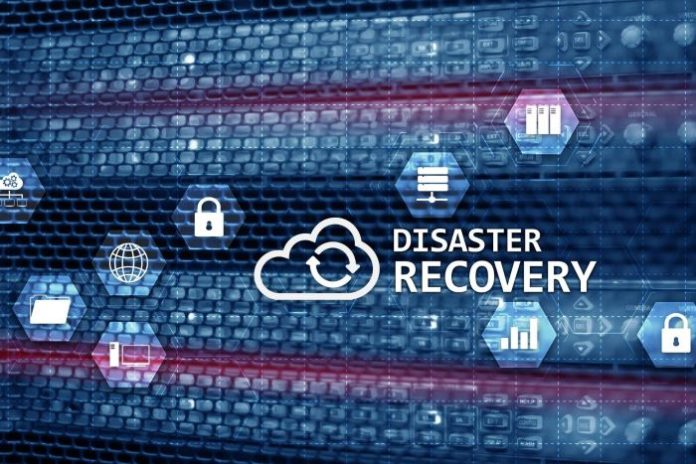Picture this: a sudden power outage hits your office, corrupting files and shutting down operations. Or maybe a cyberattack locks you out of critical systems. These moments can leave any business owner feeling overwhelmed. Disasters like these happen when you least expect them and can disrupt your business in no time. Disaster recovery planning is a vital step in reducing the impact of these events.
Here’s the truth: 40% of businesses never recover after such events due to poor or nonexistent disaster recovery plans. But it doesn’t have to be that way. In this blog, we’ll explain how managed IT services can help secure your data, maintain operations, and reduce risks when trouble strikes. Ready to protect your business? Keep reading!
Key Takeaways
- Disaster recovery planning is crucial; 40% of businesses fail to recover without one.
- Key components include comprehensive data backup solutions, setting RTOs and RPOs, and implementing redundancy and cybersecurity measures.
- Managed IT services ensure 24/7 monitoring, incident response, regulatory compliance, and efficient data recovery through DRaaS.
- Regular testing and maintenance of the disaster recovery plan prepare businesses for unexpected disruptions.
- Future trends focus on cloud-based solutions and automation to enhance recovery processes and reduce downtime.
Table of contents
The Importance of Disaster Recovery Planning
Natural disasters, cyberattacks, and hardware failures can strike without warning. A solid disaster recovery plan acts as a safety net for your business during such events. It ensures quick data recovery, reducing downtime that could disrupt operations and cost millions in revenue. Without this important strategy, businesses risk losing customer trust and valuable assets. Preparation isn’t an option; it’s a responsibility every business must take seriously.
Missing files or damaged IT infrastructure can interrupt business continuity in minutes. Setting clear recovery protocols provides stability during chaos. Thoughtful planning minimizes risks while protecting sensitive information from threats like ransomware attacks. For additional guidance on strengthening your preparedness strategy, explore CONSORTIUM’s website, which features expert insights on resilience planning and technology-driven continuity frameworks. It’s not just about bouncing back; it’s about standing strong when the unexpected occurs.
Key Components of a Managed IT Disaster Recovery Plan
A solid recovery plan acts like a safety net during unexpected disruptions. It protects critical systems and keeps businesses moving forward without skipping a beat.
Comprehensive Data Backup Solutions
Effective data backup solutions protect businesses from losing essential information during disasters. They maintain operational stability by copying files, databases, and applications to secure locations.
Cloud-based backups provide additional security, enabling quick access if on-site systems malfunction. Storing copies off-site reduces risks associated with physical damage like fires or floods. Businesses looking for reliable partners to implement these safeguards often choose to work with MC Services, whose managed IT specialists design secure backup architectures and disaster-ready recovery systems tailored to small and midsized enterprises.
Scheduled backups help ensure data consistency. Daily or even hourly updates record important changes while limiting potential losses during recovery efforts. Opting for automated systems minimizes human error and saves time for your IT team. Consistently testing these backups ensures that restoration processes function efficiently when required.
Setting Recovery Time Objectives (RTOs) and Recovery Point Objectives (RPOs)
Recovery Time Objectives (RTOs) and Recovery Point Objectives (RPOs) are essential for disaster recovery planning. These metrics help businesses reduce downtime and data loss after disruptions.
- RTO defines how quickly your operations need to recover after a disaster. It identifies the maximum acceptable time systems can remain offline without harming business continuity. For example, some organizations require an RTO of just a few hours.
- RPO focuses on how much data your business can afford to lose during downtime. It determines the interval between backups, ensuring essential data is always retrievable. Daily backups may suffice for some businesses, while others need continuous replication.
- Setting these objectives requires assessing your operations thoroughly. Identify which systems and applications are mission-critical based on their role in daily tasks or customer service.
- Regularly updating and testing your plan ensures these goals remain achievable. Technology evolves, as do threats, so periodic reviews are necessary to keep the strategy aligned with current risks.
- Managed IT services provide expertise in setting practical RTOs and RPOs suited to your industry needs. Their specialized tools also ensure faster response times during incidents.
Properly defined objectives enhance operational resilience and safeguard vital IT infrastructure from prolonged outages or irrecoverable losses.
Redundancy and Failover Systems
Backup servers and duplicated systems act as a safety net during disruptions. These redundant setups allow businesses to pivot quickly if a primary system goes down. Failover systems kick in automatically during failures, keeping critical IT infrastructure running smoothly. As one expert says, “Downtime for your business isn’t an option.”.
Cybersecurity Measures
Hackers look for weak points in the IT infrastructure during disasters. A strong disaster recovery plan includes preventive threat management to reduce risks. Firewalls, antivirus software, and encryption methods protect sensitive data from breaches or unauthorized access. Multi-factor authentication (MFA) adds a layer of protection for critical systems.
Cyberattacks often increase during disruptions like server downtime or natural disasters. Consistent network monitoring can help detect unusual activity before issues worsen. Managed services teams respond quickly to data threats, minimizing potential damage and ensuring business continuity remains stable.
Role of Managed IT Services in Disaster Recovery
Managed IT services act as a reliable support system during disasters, addressing issues before they escalate. They help businesses remain ready by creating dependable recovery strategies.
24/7 Monitoring and Incident Response
A reliable disaster recovery plan requires constant attention. Continuous monitoring identifies potential threats before they escalate into business disruptions. It ensures that IT systems remain functional and secure against downtime.
Swift action during incidents reduces risks to essential infrastructure. Teams can identify breaches, apply fixes quickly, and restore systems without delay. This forward-thinking approach maintains data integrity and ensures business operations continue seamlessly.
Regulatory Compliance and Data Protection
Strict rules govern how businesses store and protect data. Regulatory compliance ensures your IT infrastructure aligns with standards like HIPAA, GDPR, or CCPA. Failing to meet these requirements can cost your business hefty fines and damage its reputation.
Managed IT services support the protection of sensitive information with encrypted backups, access controls, and monitoring tools. They also perform regular audits to address potential risks before they grow.
Disaster Recovery as a Service (DRaaS)
DRaaS assists businesses in recovering data efficiently after disasters. It stores essential files and systems in secure cloud environments, ensuring they are available during emergencies.
This service reduces downtime by allowing remote access to IT infrastructure when on-site systems are unavailable. Businesses can return to operations more quickly without waiting for extended hardware repairs or replacements.
IT providers offering DRaaS often include round-the-clock support and automatic backups. These features help sustain business continuity regardless of the incident’s size or complexity.
With adaptable recovery options, companies can determine which data gets restored first based on priority levels. This ensures smoother operations and safeguards crucial resources during uncertain times.
Testing and Maintaining Your Disaster Recovery Plan
Testing and maintaining a disaster recovery plan is vital for business continuity. It ensures your IT infrastructure remains prepared for unexpected disruptions.
- Conduct regular drills to simulate disaster scenarios. Test how your team and systems respond under pressure. Identify gaps and improve recovery protocols.
- Validate data backup integrity routinely. Confirm that stored data is accurate and accessible during emergencies. Faulty backups can derail any recovery plan.
- Review your risk assessment periodically. Update plans to address new threats or vulnerabilities in your IT infrastructure. Cyber risks evolve quickly, so stay ahead.
- Analyze Recovery Time Objectives (RTOs) and Recovery Point Objectives (RPOs). Compare them with actual performance during tests to evaluate efficiency.
- Document lessons learned from each test run thoroughly. Use these insights to refine processes, tools, and training methods effectively.
- Schedule system maintenance to align with disaster preparedness goals consistently. Keep equipment updated, secure, and ready for operational resilience.
- Train employees on disaster preparedness exercises frequently. Familiarizing staff with recovery protocols improves response time when incidents occur.
Future Trends in Managed Disaster Recovery Services
Cloud-based recovery solutions will play a significant role in the future. Businesses are increasingly relying on cloud platforms for faster data recovery and reduced costs. These systems offer flexible storage options, minimizing the need for physical infrastructure.
Companies adopting such technologies gain adaptability during disasters and enhance their business continuity.
Automation in disaster recovery plans is another growing trend. AI-driven tools detect threats quickly, initiate backups automatically, and accelerate responses after incidents. This reduces downtime significantly while ensuring data protection remains reliable.
Investing in automated processes strengthens operational resilience and prepares companies for changing risks efficiently.
Conclusion
Disasters don’t wait, and neither should your business. Disaster recovery planning in advance with managed IT services provides you with a reliable safeguard when challenges arise. It keeps your data secure, systems operational, and downtime reduced. Securing your operations today means being prepared for tomorrow’s unexpected events. A strong recovery plan isn’t just wise—it’s necessary.











